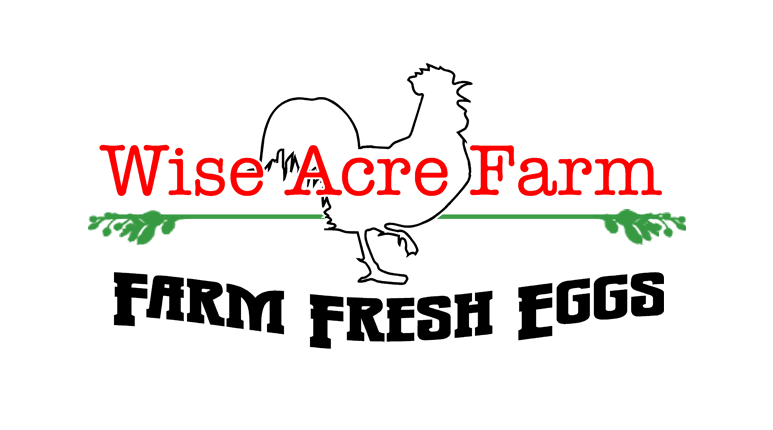Hello, I am Farmher Tiffany, a first-generation farmer in the North Bay Area of San Fransico. My husband and I took a leap of faith and purchased Wise Acre in 2018. Each day brings new lessons in agriculture, whether it's discovering innovative practices to enhance the land and the lives of our animals, or learning time-honored techniques that I previously knew nothing about.
As farmers, we constantly navigate a myriad of challenges while celebrating small victories, like the rare days when everything runs smoothly. Through my monthly blog posts, I aim to illuminate an industry that is crucial to our daily lives, yet often misunderstood. From how our food is grown, raised, produced, and marketed, to the journey it takes before reaching store shelves—this is my perspective and opinion as a wife, mother, farmer, and active community member.
Egg prices past & present
The cost of eggs has been a hot topic lately. It wouldn't surprise me if "egg" was Webster Dictionary's word of the year for 2025. In 2021, supermarkets saw a dramatic increase in egg prices. This was partly due to rising fuel costs, and here in California, our prices were also affected by the drought. Although it wasn't as widely discussed, bird flu was spreading back then as well, wiping out millions of birds. This came about two years after California and Arizona lost millions of birds to Newcastle disease.
Feed costs across the nation shot up, partly due to the rise in fuel costs. Here in California, we were in the second year of drought, causing an increase in crop prices. By 2022, a head of romaine lettuce was over $6 at Oliver's! Our feed bill rose by 37%, and for the first time, we had to discuss raising our prices. This led to the start of our stew hen program. Previously, we sold our retired layers for $3 to $4 each to community members for continued egg use or to harvest themselves. By harvesting the hens ourselves, we could increase our income over 100% without increasing our overhead expenses, as we already had the necessary equipment on the farm. I always say my little stew hen program is one of my biggest accomplishments because it not only provided more income for the farm but also a high-quality food product at a fair price.
At the end of 2023, I realized we wouldn't survive without a price increase. We held out until our cash flow predictions turned red, which happened in the summer of 2024 due to the need to start preparations for a new flock. Raising a flock of egg-laying hens to their laying age costs thousands of dollars from feed to energy cost for heating a brooder. Winter would also not bring enough income to cover costs of the layers. So that summer, we raised the cost of each dozen by $1, matching the prices of other local pasture-raised producers. This increase was fully due to the loss of our flock, and we actually hope to lower the cost back down once our main flock is back to 1,000 layers. Feed costs have dropped dramatically over the last two years, and we hope it stays that way.
Millions of birds (and other wild and domestic animals) have perished due to bird flu, leaving farms across the nation in the same position we were in last year: scrambling to recover from such a devastating loss. Many farms operate as production-only businesses and do not market their own products. This is how the majority of the market works, meaning many farms do not even control the price of their eggs. Distributors need to raise prices due to the inconvenience and extra work it takes to find new suppliers, or they simply see an opportunity because that's the market rate these days, similar to the outrageous cost of rentals.
Unfortunately, if you were hoping for prices to go down soon, it's not going to happen anytime soon. It takes six months from egg to laying hen and bird flu is still spreading. Additionally, the USPS, which is the only carrier legally allowed to transport live animals, added a $15 per box fee starting this year. This means that smaller family farms, even those that haven't lost their flock, have a new expense that will be passed along to the consumer. So, if you were hoping for grocery store prices to decrease, it's best to make friends with your neighbor who has a backyard flock! Bring them your food scraps, an empty carton, and a smile!
Why wouldn't I raise my prices right now? Why would I consider lowering them when pasture-raised eggs are going for almost $13 a dozen? On a purely personal note, I don't measure my worth by monetary value. From a business standpoint, we are also diversifying our operations and have developed new income streams, which provide us with more financial stability. These new ventures have allowed us to achieve greater financial comfort, and by the end of the year, we anticipate being able to handle our own emergencies without external assistance. This diversification not only strengthens our farm's resilience but also ensures that we can continue to support our community and provide high-quality products. We don’t want anyone to think that we lower prices with the assuming the community will step up and help financially.
My customers are my neighbors, and when I need help, you all flock to our rescue. So, when I'm in a position to help lower grocery bills, I'm going to step up and do my best. I honestly feel like a “birden” on this community for the past year, from financial assistance with the vending machine to covering the cost of our new chicks that arrived last October. It will feel like another bug accomplishment to pass our savings along to the community.
Much love,
Farmher Tiffany

